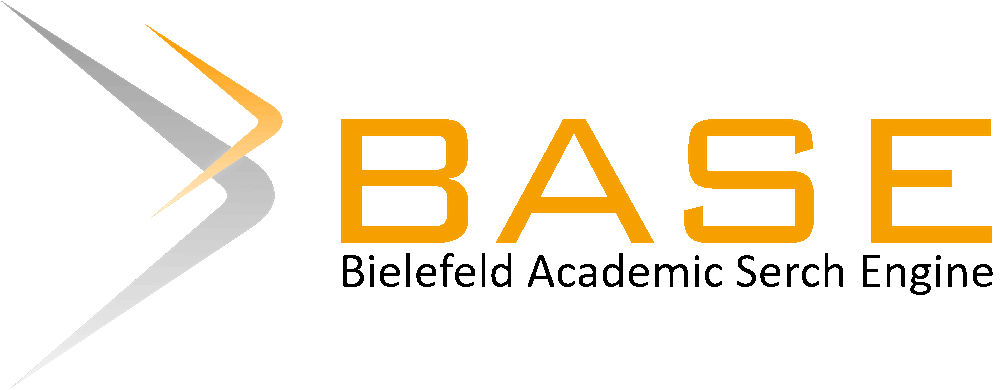Anthropogenetics of the bone and muscular system as a perspective indicator in high achievement sports
Keywords:
high performance sport, sports longevity, vitamin D receptor gene, type 1 collagen gene, injury, stress fractureAbstract
Throughout the entire sports career, the athlete is subjected to constant emotional and physical stress. The discrepancy between the ever-increasing load and the physical condition, the increase in the requirements for the preparedness of an athlete often leads to the occurrence of various kinds of injuries. The main prognostic factor for the occurrence of fractures and stress fractures in novice athletes, as well as athletes in the elite sports environment, is considered to be low bone mineral density. Rehabilitation after such fractures requires significant recovery time and entails missed training sessions, reduced athletic performance and serious consequences for the health of the athlete. The risk of fractures, stress fractures, overstrain injuries in athletes largely depends on bone tissue metabolism, which is associated with VDR and COL1A1 gene polymorphisms. Identification and study of polymorphisms of genes predisposing to a decrease in bone mineral density, stress fractures, will make it possible to identify the so-called "risk groups" and will allow timely preventive measures, increase the effectiveness of training, and reduce the risk of injury by adjusting the training process, as well as taking corrective biologically active additives, thus preserving the health of the athlete.
Objective – to study the prevalence of genotypes and alleles of the rs731236 polymorphism of the vitamin D receptor (VDR) gene and the rs1800012 polymorphism of the collagen type 1 gene (COL1A1) in athletes of various qualifications.
References
Коваленко, Ю. А. Проблемы травматологии в современном спорте / Ю.А. Коваленко // Теория и практика физической культуры. – 2006. – № 5. – С. 22–29.
Козлова, А. С. Возможные молекулярно-генетические предикторы развития патологий локомоторной системы при экстремальных физических нагрузках / А. С. Козлова [и др.] // Клиническая фармакология. – 2015. – Том.13. – № 3. – С. 53–62.
Неханевич, О. Б. Вплив полiморфiзму гену COL1A1 на стан опорно-рухового апарату та серцево-судинну систему / О. Б. Неханевич / J. Science Rise. – 2015. – № 11/3(16). – С. 44–50.
Руденко, Е. В. Ассоциация полиморфных вариантов гена рецептора витамина D с показателями минеральной плотности костной ткани у женщин в менопаузе / Е. В. Руденко [и др.] // Вест. НАН Беларусі. Сер. мед. навук. – 2019.– Т. 16. – № 2. – С. 192–201. – https://doi.org/10.29235/1814-6023-2019-16-2-192-201.
Самойлов, А. С. Анализ физических, генетических и психологических методов профилактики травм опорно-двигательной системы у высококвалифицированных спортсменов / А. С. Самойлов [и др.] // Спортивная медицина: наука и практика. – 2020. – T. 10. – № 1. – С.46-57. – DOI: 10.17238/ISSN2223-2524.2020.1.46.
Al Anouti, F. An insight into the paradigms of osteoporosis: From genetics to biomechanics / F. Al Anouti, Z. Taha, S. Shamim, et al. // Bone Reports. – 2019. – № 12. – P. 100-216.
Banjabi, A.A., Genetic influence of vitamin D receptor gene polymorphisms on osteoporosis risk / A.A. Banjabi, A.B. Al-Ghafari, T.A. Kumosani, K. Kannan, S.M. Fallatah // Int J Health Sci (Qassim). – 2020. – Vol.14(4). – P. 22-28.
Baumert, P. Genetic variation and exercise-induced muscle damage: implications for athletic performance, injury and ageing / P. Baumert [et Al.] // Eur. J. Appl. Physiol. – 2016. – Vol. 116. – P. 1595–1625.
Behrens, S. B. Stress fractures of the pelvis and legs in athletes: a review / S. B. Behrens [et. al] // Sports health. – 2013. – № 5(2). – P.165–174.
Blades, H.Z. Collagen gene polymorphisms influence fracture risk and bone mass acquisition during childhood and adolescent growth / H.Z. Blades [et al.] // Bone. – 2010. – Vol. 47. – P. 989–994.
Chatzipapas, C. Polymorphisms of the Vitamin D Receptor Gene and Stress Fractures /C. Chatzipapas [et al.] // Horm. Metab. Res. – 2009. – V.41. – P. 635–640.
Herbert, A. J. The interactions of physical activity, exercise and genetics and their associations with bone mineral density: implications for injury risk in elite athletes / A. J. Herbert [et al.] // Eur. J. Appl. Physiol. – 2018. – 119. – Р. 29–47.
Ji, G.-R. Bsm I., Taq I., Apa I. and Fok I. polymorphisms in the vitamin D receptor (VDR) gene and risk of fracture in caucasians: a meta-analysis / G.-R. Ji [et. al]// Bone. – 2010. – 47. – P.681–686.
Kiel, J., Kaiser, K. Stress Reaction and Fractures / J. Kiel, K. Kaiser // In: StatPearls. Treasure Island (FL): StatPearls Publishing, 2020. – June 25.
Kondratyeva, E.I. Vitamin D Status in Russian Children and Adolescents: Contribution of Genetic and Exogenous Factors / E.I. Kondratyeva [et al.] // Front Pediatr. – 2020. – № 8. – Р. 583-586.
Kozlovskaia, M. Biomedical risk factors of achilles tendinopathy in physically active people: a systematic review / M. Kozlovskaia [et аl.] // Sports Med. – 2017. – Vol. 3(1). – doi: 10.1186/s40798-017-0087
Trajanoska, K., Morris J. A., Oei L., Zheng H.-F., Evans D., Kiel M., et al. Assessment of the genetic and clinical determinants of fracture risk: genome wide association and mendelian randomisation study // BMJ. – 2018. –Vol. 362. –doi: https://doi.org/10.1136/bmj.k3225
Uitterlinden, A.G. Genetics and biology of vitamin D receptor polymorphisms / A.G. Uitterlinden, Y. Fang, J.B. van Meurs, H.A. Pols, J.P. van Leeuwen // Gene. – 2004. – Vol. 338. – P. 143–56.
Wilkins, J. M. Association of a functional microsatellite within intron 1 of the BMP5 gene with susceptibility to osteoarthritis / J. M. Wilkins [et. al] // BMC Med. Gen. – 2009. – Vol. 10. – P. 141-149.
References
Kovalenko YU. A. Problemy travmatologii v sovremennom sporte [Problems of traumatology in modern sports]. Teoriya i praktika fizicheskoj kul'tury [Theory and practice of physical culture]. 2006, no. 5, pp. 22–29. (In Russian)
Kozlova A.S. et al.Vozmozhnye molekulyarno-geneticheskie prediktory razvitiya patologij lokomotornoj sistemy pri ekstremal'nyh fizicheskih nagruzkah [Possible molecular genetic predictors of the development of pathologies of the locomotor system during extreme physical exertion]. Klinicheskaya farmakologiya [Clinical pharmacology]. 2015. Vol.13., no 3, pp. 53–62. (In Russian)
Nekhanevich O.B. Vpliv polimorfizmu genu COL1A1 na stan oporno-ruhovogo aparatu ta sercevo-sudinnu sistemu [The influence of the COL1A1 gene polymorphism on the state of the musculoskeletal system and the cardiovascular system]. Scientific Journal «ScienceRise». 2015, no. 11/3(16), pp. 44–50.
Rudenko E.V. et al. Associaciya polimorfnyh variantov gena receptora vitamina D s pokazatelyami mineral'noj plotnosti kostnoj tkani u zhenshchin v menopauze [Association of polymorphic variants of the vitamin D receptor gene with indicators of bone mineral density in menopausal women]. Ves. Nac. akad. navuk Belarusі. Ser.med.navuk [Vest. NAS of Belarus. Ser. Medical navuk.]. 2019.Vol. 16, no. 2, pp. 192–201. (In Russian) Available at: https://doi.org/10.29235/1814-6023-2019-16-2-192-201.
Samojlov A.S. et al. Analiz fizicheskih, geneticheskih i psihologicheskih metodov profilaktiki travm oporno-dvigatel'noj sistemy u vysokokvalificirovannyh sportsmenov [Analysis of physical, genetic and psychological methods of prevention of injuries of the musculoskeletal system in highly qualified athletes]. Sportivnaya medicina: nauka i praktika [Sports medicine: science and practice]. 2020. Vol. 10, no. 1, pp. 46-57. (In Russian)
Al Anouti F., Taha Z., Shamim S. et al. An insight into the paradigms of osteoporosis: From genetics to biomechanics. Bone Reports. 2019 Dec;11:100216.
Banjabi A.A., Al-Ghafari A.B., Kumosani T.A., Kannan K., Fallatah S.M. Genetic influence of vitamin D receptor gene polymorphisms on osteoporosis risk. Int J Health Sci (Qassim). 2020. Vol.14(4), pp. 1595–1625.
Baumert P. et al. Genetic variation and exercise-induced muscle damage: implications for athletic performance, injury and ageing. Eur. J. Appl. Physiol. 2016. Vol. 116, pp. 165–174.
Behrens S. B. et al Stress fractures of the pelvis and legs in athletes: a review. Sports health. 2013, no. 5(2), pp. 989–994.
Blades H.Z. et al. Collagen gene polymorphisms influence fracture risk and bone mass acquisition during childhood and adolescent growth. Bone. 2010. Vol. 47, pp. 635–640.
Chatzipapas C. et al. Polymorphisms of the Vitamin D Receptor Gene and Stress Fractures. Horm Metab Res. 2009. V.41, pp. 29–47.
Herbert A. J. et al. The interactions of physical activity, exercise and genetics and their associations with bone mineral density: implications for injury risk in elite athletes. Eur. J. Appl. Physiol. 2018. 119, pp. 681–686.
Ji G.-R. Bsm I., Taq I., Apa I. and Fok I. polymorphisms in the vitamin D receptor (VDR) gene and risk of fracture in caucasians: a meta-analysis. Bone. 2010. 47, pp. 681–686
Kiel J., Kaiser, K. Stress Reaction and Fractures. In: StatPearls. Treasure Island (FL): StatPearls Publishing. June 25, 2020.
Kondratyeva E.I. et al. Vitamin D Status in Russian Children and Adolescents: Contribution of Genetic and Exogenous Factors. Front Pediatr. 2020, no. 8, pp. 583-586.
Kozlovskaia M. et аl. Biomedical risk factors of achilles tendinopathy in physically active people: a systematic review / M. Kozlovskaia. Sports Med. 2017. Vol. 3(1). doi: 10.1186/s40798-017-0087
Trajanoska K., Morris J. A., Oei L., Zheng H.-F., Evans D., Kiel M., et al. Assessment of the genetic and clinical determinants of fracture risk: genome wide association and mendelian randomisation study. BMJ. 2018. Vol. 362. doi: https://doi.org/10.1136/bmj.k3225
Uitterlinden A.G., Fang Y., J.B. van Meurs, Pols H.A., J.P. van Leeuwen Genetics and biology of vitamin D receptor polymorphisms. Gene. 2004. Vol. 338, pp. 143–56.
Wilkins J. M. et al Association of a functional microsatellite within intron 1 of the BMP5 gene with susceptibility to osteoarthritis. BMC Med. Gen. 2009. Vol. 10, pp. 141-149.










